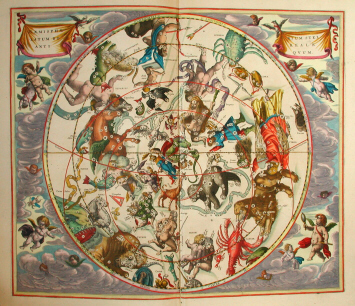|
Algorithm
I is the
first of the Chaos Theory paintings by John Jenkins.
The goal of these works is to explore the development and
application of chaos theory in visual terms as it applies to art,
art history and the relationship between artist, viewer and
subject.
The
Algorithm paintings are divided into “arguments.”
Each panel presents an idea or sub-theory that when
combined with the other presented arguments illuminates a specific
area of chaos theory.
|
|
Argument
One:
Algorithm I is dominated on the left by a portrait
of Elizabeth Montague, which has been derived from an original
work by the British artist Thomas Gainsborough.
Montague’s portrait had been painted several years
earlier by Gainsborough’s rival, Sir Joshua Reynolds.
As the President of the Royal Academy in England during the
late 1700’s, Reynolds wrote disapprovingly of Gainsborough’s
painting technique.
“…all
those odd scratches and marks, which, on close examination, are so
observable in Gainsborough’s pictures, and which even to
experienced painters appear rather the effect of accident than
design;
this chaos, this uncouth and shapeless appearance, by a
kind of magick, at a certain distance assumes form, and all the
parts seem to drop into their proper places.”
|
|

|
|
This
reference to chaos in Reynolds’ critique brings to light an
interesting correlation between the two artists.
Gainsborough utilizes a much more dynamic and “chaotic”
method of brushwork that forces the viewer’s eye to create the
image out of the markings of paint on the canvas.
Reynolds preferred a smoother and more classical approach
to painting that allowed it to be universally understood and
accessible to any viewer.
|
|
Argument
Two:
The slim band dividing the work from top to bottom is
filled with shades of gray.
Neither a true black nor a true white is achieved in this
band.
A
gray area is a term for a border in-between two or more things
that is unclearly defined, a border that is hard to define or even
impossible to define, or a definition where the distinction border
tends to move.
This
argument concerns the lack of any absolutes in theoretical models,
including the chaos theory.
|
 |
Argument
Three: The second major element of Algorithm I is a
starchart derived from the Harmonia Macrocosmica by Andreas
Cellarius. Most viewers will be familiar with the icons and
symbology presented as a map of the stars in the sky. The
forms of animals and mythological beings created from the star
patterns however, may not be entirely familiar.
The
process of mapping the heavens by creating recognizable patterns
from groups of celestial bodies is a method of bringing order to a
chaotic element. The figures and creatures represented in
the map function to subdivide the stars into understandable
groupings.
By
overlaying the imagination of a viewer we no longer see a chaotic
array of stars, but specific characters and symbols. As time
progresses these figures gain their own histories, authority and
narrative until the importance of the actual stars is diminished.
|
|
Argument
Four:
The final band of Algorithm I is a band of dark
colors which represent the sequencing of DNA.
This band references Jenkins’ earlier work, genomic,
which dealt with the mapping of human genomes.
Arguments 3 and 4 are similar in terms of quantifying chaos
by subdividing it. One is concerned with the macrocosmic view, the
other with the microcosmic view.
The
combination of the four arguments presented in Algorithm I
relate in the matter of observation.
Chaos in its natural state cannot be understood by the
human mind and must be divided into controlled areas to
extrapolate patterns.
In the brushstrokes of pigments that become an eye or in
the superimposition of a familiar figure over a group of stars, it
is in this purposeful segregation of seemingly random elements
that the first
lesson of chaos theory lies.
This is known as “deterministic chaos,” in which
dynamics of complex systems, whose behavior appears random,
actually follows rigid laws.
|
|